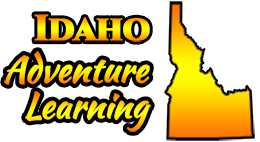Sharing Cycles
Submitted by Justin Frost on Thu, 2017-07-13 00:00
Idaho is know as "The Wilderness State," containing the Sawtooth, Hemingway-Boulders, Jerry Peak, White Clouds, Frank Church, Selway-Bitteroot, Gospel Hump and Hell's Canyon Wilderness areas in Central and North Idaho. These areas are defined that serve to host humans and are untrammeled by those interactions. The Wilderness Act must balance the goals of various groups and seem to make the "Wilderness accessible to those Americans who wish to use it." As educators we must accommodate to differentiated classrooms and share with all students the joy and importance of preserving Wild and public areas.
The value of public lands is placing us within our natural domain and analyzing how we as humans directly influence and grow from the environment. In Wild lands, "our typical condition of continuous partial attention, affirmed by a constant online presence, is obsolete," as we enter a deeper sense of time. We can learn with greater depth and become more attentive to each moment.
What is the value of spending time outdoors? How could you get your students out into Wild areas?

Comments
Endless Value
Spending time outdoors has infinite value, especially for children. Not only does it teach an appreciation for nature, our ecosystem, and its services- but it also fosters curiosity, adventure, and grit. I cannot begin to list all of the lesson I learned from spending time outdoors. I hope to instill this love of the wilderness in my son, but I can already tell he loves being outside. It seems like he already knows that life is better outdoors.
Someone mentioned taking their students on a field trip of the Boise WaterShed, as it is free and provides ample opportunities for educators. I love this idea, and the idea of teaming up with my peers to plan a cross-curricular day! I mentioned Deer Flat Refuge by Lake Lowell in another post, which is another great asset to the Nampa/Caldwell community. I love the idea of taking my students for a walk, or doing work outside, but getting students in the wilderness would be the ultimate.
Some of my favorite memories as a learner took place outside. In sixth grade, my entire class spent a week north of Ketchum at Environmental Camp. We would spend our days outside learning, exploring, and problem solving. In the evenings, we got to know each other and developed friendships that endure to this day. In high school, our botany teacher taught us everything we needed to know about local plants by taking us on hikes and modeling a passion for local vegetation. In college, my favorite course was Idaho Natural History in which we took weekly field trips and learned about our region's natural history and current standing. These experiences are ingrained in my memory, recalled often, and truly helped form the foundation of my ecological understanding and passion for Idaho's awesome wilderness. I hope all young people get to at least experience teachers who are passionate about the outdoors, and hopefully get to enjoy some of their lessons out of the classroom.
Slow Learning
Hi Emma,
Thank you for sharing experiences about outdoor ed, sounds that you are a veteran of Nature. Wild settings help free us of disruptions and expand our imagination. As you mentioned, it allows us to invent new ideas and solutions in landscape that is untrammeled by humans. Hope that we can continue to share the value of Nature with our students!